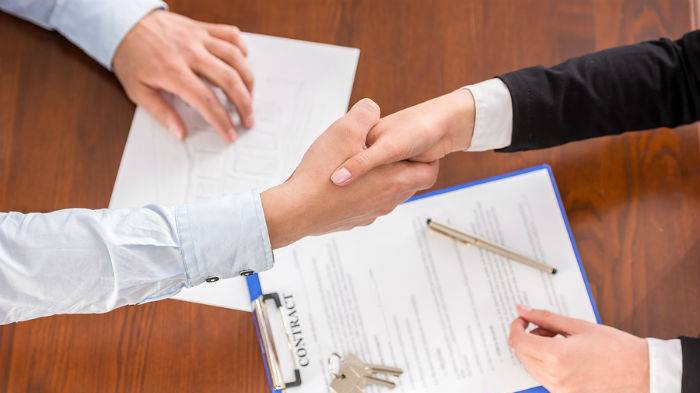According to Zoopla, the average house price in the UK is £270,00 (as of July 2025). If you've been unable to save a large enough deposit, it can be difficult to try and get onto the housing market.
The good news is, if you live in Wales the Help to Buy equity loan is still being offered to first-time buyers until the end of September 2026. Here's how it works.

What is the Help to Buy scheme?
The Help to Buy equity loan scheme is only available to Welsh residents until September 2026. You can no longer apply for the scheme in England, Scotland or Northern Ireland.
Help to Buy - Wales offers a loan to first-time buyers on new-build homes registered with the scheme. This is an equity loan which means it's determined by the value of the property, so can go up or down with the property value.
Buyers only need to contribute a 5% deposit, and the government loan can be added to cover up to 20% of the property purchase price.
The Help to Buy scheme can only be used for properties with a maximum price of £300,000.
You then must take out a repayment mortgage to cover the remainder of the purchase price.
How does Help to Buy work?
Let’s say you buy a property for the maximum price of £300,000:
| For a property worth £300,000 | Percentage | Amount |
|---|---|---|
|
Your cash deposit
|
5%
|
£15,000
|
|
Government equity loan
|
20%
|
£60,000
|
|
Your mortgage
|
75%
|
£225,000
|
Because the government loan boosts your deposit, your loan to value (LTV) is lower. This usually helps you get access to better mortgage rates, as lenders see lower LTV deals as less risky.
Paying back the loan:
- You must repay the equity loan within 25 years (or when you sell the home, if sooner).
- Interest-free for the first 5 years.
- From year 6, you pay 1.75% interest, which then rises annually by RPI (inflation) + 1%.
- You can repay the loan in full at any time.
Who is eligible for Help to Buy?
To be eligible for the Help to Buy mortgage equity loan scheme, you must:
-
Live in Wales
-
Buy a home from participating builders who are registered with the scheme
-
Buy a home with a maximum purchase price of £300,000
-
Contribute a minimum deposit of 5%
-
Be able to fund at least 80% of the property through the combination of a repayment mortgage and a deposit
-
Not sub-let any part of the house
-
Be a genuine first-time buyer who is not getting a second home mortgage through this scheme
Can you still get a mortgage with the Help to Buy scheme?
Yes, you need to get a Help to Buy mortgage to use the scheme from a participating lender.
You must put down a minimum of a 5% deposit, and you can borrow up to 20% of the value of the property from the government (known as an equity loan). You'd then need to take out a mortgage to pay the remaining amount of the property value at the time of purchase.
Compare Help to Buy mortgages with Mojo Mortgages, whose brokers can help you find providers that work with the scheme.
Get more information about mortgages
Are there any fees involved in Help to Buy?
Yes, you need to pay an interest rate on your loan after 5 years. You must also pay a monthly management fee of £1 from when you take out the loan until the loan is fully paid off.
You may also attract admin fees when repaying the equity loan.
This is why it's important to use a mortgage broker for advice, who can find the right lenders for you during mortgaging and remortgaging with a Help to Buy home.
Can I sell my house after using Help to Buy?
Yes, you can sell your home at any point but you must repay the equity loan if you haven't already paid it back.
But due to the Help to Buy scheme being an equity loan, you may need to repay back more of your loan if your house is worth more than when you bought it (or less if the property value has decreased).
Pros and cons of Help to Buy
Pros
- Only need a 5% deposit
- Interest-free for the first 5 years
- Instead of using your money to pay rent, you are building up equity in a home of your own.
Cons
- It’s only available for new builds, so your options of properties to buy are a little limited.
- After the first 5 years, the loan becomes more expensive the longer you live in the property. And if the rate of inflation goes up a lot, so will the interest on your loan.
- As it's an equity loan, if your property goes up or down in value, so does the amount you owe.
Alternatives to Help to Buy
Other alternatives to Help to Buy mortgage include:
-
Shared ownership (England & Wales): In a shared ownership mortgage, the government lets you buy 25 - 75% of a home and pay rent on the rest and you can keep on buying bigger shares of the property until you own all of it.
-
Guarantor mortgages: A guarantor mortgage may be an option if you have little to no deposit. You typically have close family members to act as mortgage guarantors so if you fall behind on your repayments they are legally responsible for the debt.
-
Deposit Unlock Scheme: Buy a new-build home from a builder associated in the scheme with just a 5% deposit.
-
First Homes Scheme (England): This scheme allows you to buy a home 30% to 50% below the market value. The home can't cost more than £250,000 (£420,000 in London), and you can only sell your home to someone else who is eligible to buy a First Home.
-
LIFT Scheme (Scotland): Shared equity support for first-time buyers through government-backed initiatives.







